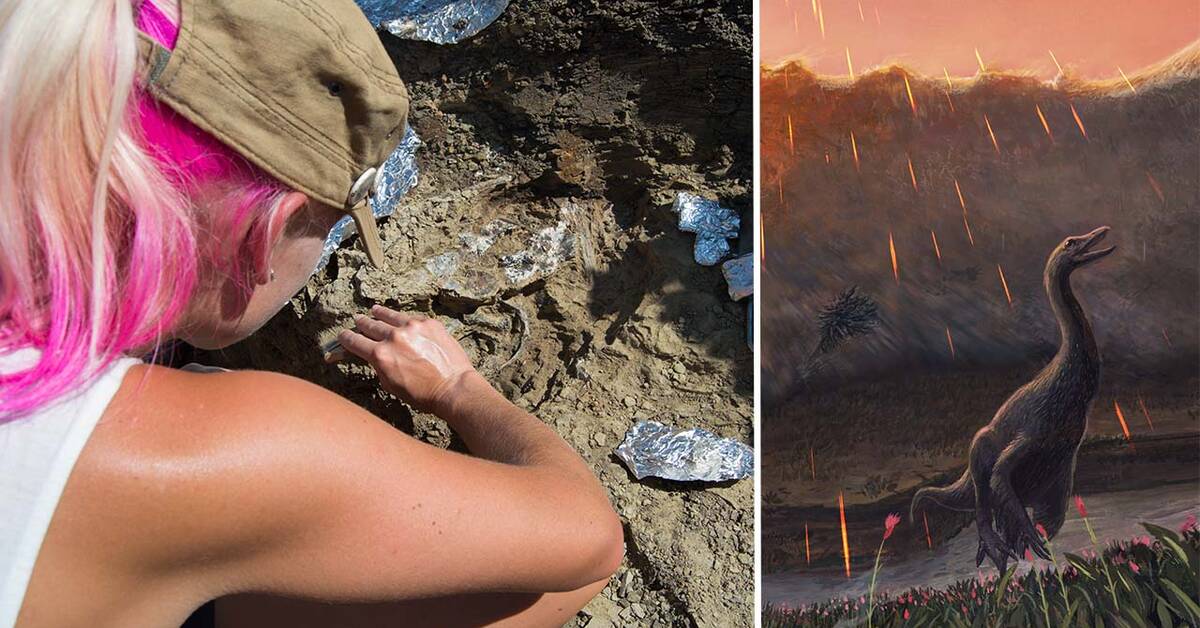Earthquakes, tsunamis and darkness are said to have marked the last day of the dinosaurs on earth.
The mass extinction in which the dinosaurs became extinct was caused by an asteroid that crashed on the Yucatan Peninsula in present-day Mexico 66 million years ago.
Thanks to fossils from fish in North Dakota, USA, we now have another clue about the last days of the dinosaurs.
Namely that the asteroid crashed in the spring.
- This is not the first time that you can see incredible details in fossils.
You can even see if they had certain diseases by looking at their legs.
But in this case, we can also read out the moment the disaster happened, and it is completely unique, says Melanie During who is the lead author of the article published in Nature this week.
The fish were washed ashore from a river when the asteroid crashed and buried under sediment.
During the excavation, glass beads were also formed that formed when the asteroid struck, and which show that the fish must have died shortly after the asteroid impact.
Can provide clues as to why we exist
Mass extinction wiped out 76 percent of all species on the planet, which completely changed the direction of evolution.
Knowledge of the season on which the asteroid struck can provide clues as to why some species survived and not others.
- Results will be able to help model the cause of the selective survival in mass extinction.
It can help us understand why small mammals, birds and crocodiles survived at the expense of large dinosaurs and pterosaurs, says Stephen McLoughlin, paleontologist at the Swedish Museum of Natural History.
The seasons affected survival
It was not only between the species that survival differed, but also between the hemispheres, so-called hemispheres.
Despite the fact that natural disasters affected the entire globe, the recovery seems to have been twice as fast in the southern hemisphere where it was autumn when the asteroid struck, than in the north where it was spring.
How hard different places were affected may partly be due to the season.
- In the northern hemisphere, where it was spring when the asteroid struck, many animals were very exposed.
Animals looked for partners, looked for food and took care of kids.
In the southern hemisphere, many species were preparing for winter.
If they came up with something out of the ordinary, then they have to re-think their position.
It plays a big role because those who were exposed probably died immediately.
But if you had protection, you had a chance to survive, Melanie During explains.
Play the video to see how the scientists came to the conclusion that the dinosaurs died in the spring.

